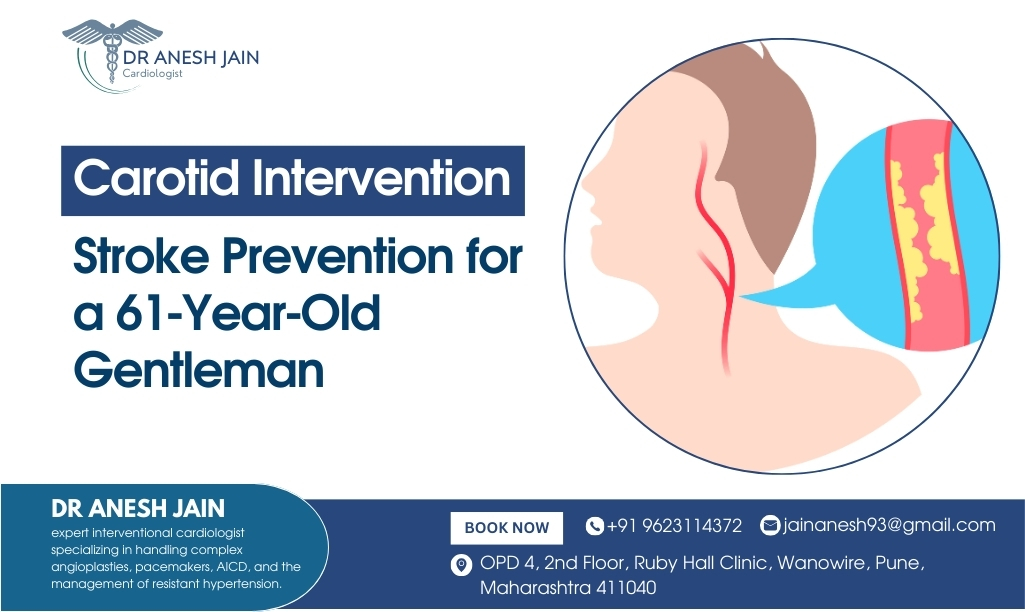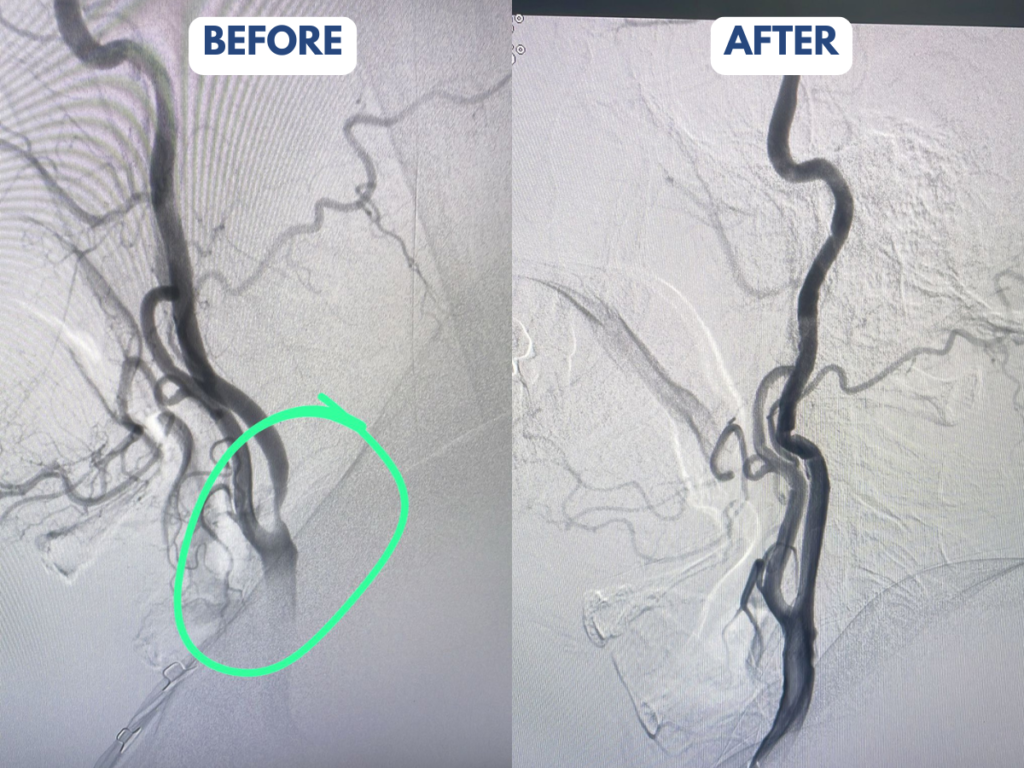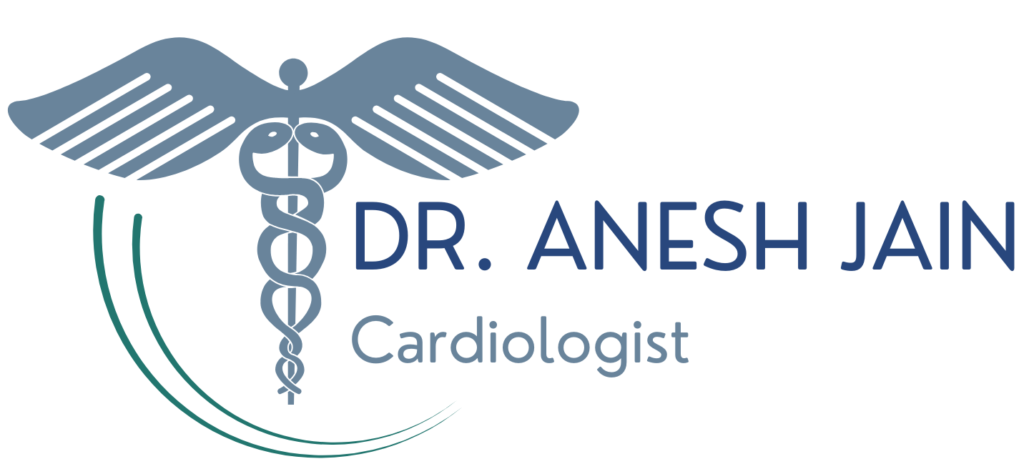- Ruby Hall Clinic, near Wanowrie, Pune, Maharashtra
- Mon - Fri: 9:00 am - 4:00 pm
Lorem ipsum dolor sit amet, consectet eiusmod tempor incididunt ut labore e rem ipsum dolor sit amet. sum dolor sit amet, consectet eiusmod.
Visiting Hours
| Mon - Fri: | 8:00 am - 8:00 pm |
| Saturday: | 9:00 am - 6:00 pm |
| Sunday: | 9:00 am - 6:00 pm |
Gallery Posts






Carotid Intervention: Preventing Stroke Recurrence in a 61-Year-Old Gentleman

Introduction
As a cardiologist dedicated to providing comprehensive heart and vascular care, I recently had the opportunity to perform a critical procedure on a 61-year-old gentleman who had previously suffered a stroke.
His recovery was promising, but the risk of a recurrent stroke loomed due to significant blockages in his carotid artery. In an effort to prevent another potentially life-threatening event, we opted for an elective carotid angioplasty.
The procedure was a crucial step in ensuring his health and avoiding a future stroke. Here’s a closer look at the importance of carotid interventions, what the procedure involves, and why early detection is key to preventing severe complications.
Understanding Carotid Artery Disease and Stroke Risk
Carotid arteries are the major blood vessels in the neck that supply blood to the brain. When plaque (composed of fat, cholesterol, and other substances) builds up in these arteries, it leads to carotid artery disease, which can significantly reduce blood flow to the brain.
If a piece of plaque breaks off, it can travel to the brain and cause a stroke. Blockages can occur in various places along the carotid arteries, and if left unchecked, they can have disastrous consequences.
For my patient, a recovered stroke survivor, the risk of another stroke was elevated due to the presence of substantial arterial blockages. It was essential to act promptly to restore proper blood flow and reduce this risk. After a thorough evaluation, an elective carotid angioplasty was deemed the best course of action.
Why Elective Carotid Angioplasty Was the Right Choice
Carotid angioplasty is a minimally invasive procedure used to open narrowed or blocked carotid arteries. During the procedure, a catheter with a small balloon at its tip is inserted into the blocked artery. The balloon is then inflated to widen the artery, and a stent (a small mesh tube) is often placed to keep the artery open.
The decision to perform this procedure electively allowed us to avoid the potential complications that could arise from an emergency situation. It provided the patient with a safer, more controlled environment for intervention, which is especially important for individuals with a history of stroke.
By widening the narrowed artery and ensuring proper blood flow to the brain, we significantly reduced the likelihood of a recurrent stroke.
Related: Angiography vs. Angioplasty: Which is Right for You?
The Outcome: A Safer Future for My Patient

The angioplasty was successful, and my patient’s recovery is progressing well. He is now at a lower risk of suffering another stroke, thanks to the restored blood flow. While the procedure has substantially reduced his risk, it’s important for him to continue with regular follow-ups and maintain a healthy lifestyle to further minimize the chances of recurrence.
Why Early Detection Is Critical For Coronary Artery Disease?
Carotid artery disease often progresses silently, with no noticeable symptoms until a stroke occurs. This makes regular checkups and early detection extremely important, especially for individuals with risk factors such as:
- Age (older than 55)
- High blood pressure
- High cholesterol
- Diabetes
- Family history of stroke or cardiovascular disease
- Smoking
Getting screened early can help detect blockages before they become critical, allowing for preventive measures to be taken. In some cases, lifestyle changes, medication, or minimally invasive procedures like carotid angioplasty can be employed to manage the condition effectively.
Related: The Top 7 Warning Signs You Need to See a Cardiologist
Preventing Stroke Recurrence: What You Can Do
If you have a history of stroke, heart disease, or any risk factors for vascular conditions, I strongly encourage you to schedule regular checkups to assess the state of your arteries. It is always better to address potential issues before they lead to serious complications. Remember, blockages can form anywhere along the vascular system, and detecting them early can save lives.
In conclusion, the journey to recovery from a stroke doesn’t end with the first step. Ongoing vigilance, regular screenings, and prompt treatment when necessary are essential to maintaining vascular health and preventing future strokes.
As the best cardiologist in Pune, I am committed to helping my patients navigate this path with the best possible care, and my recent experience with carotid intervention for a 61-year-old gentleman reminds me of the impact early and elective treatment can have on a person’s life.
Don’t wait until it’s too late. Get your checkup today and take control of your vascular health.


